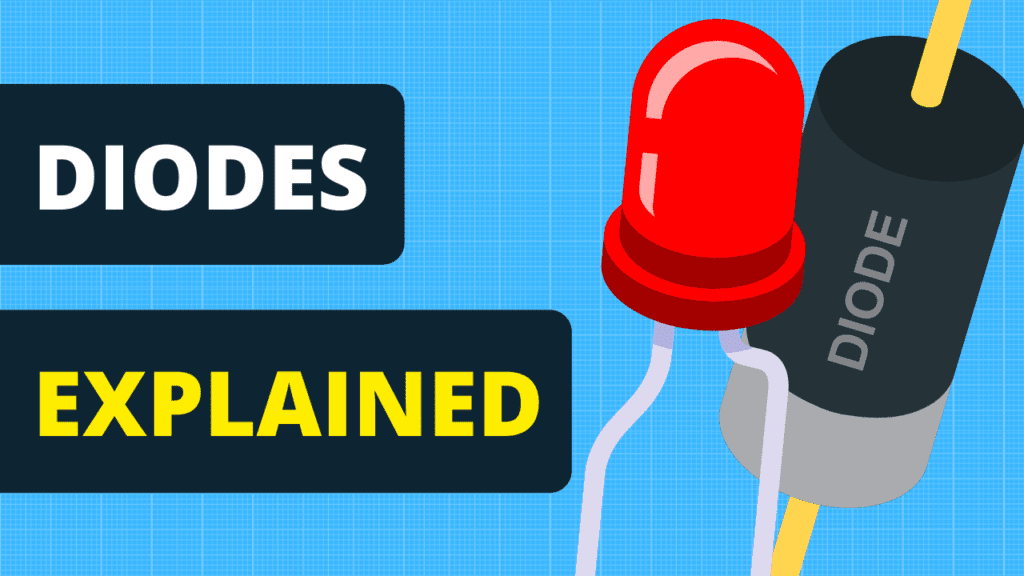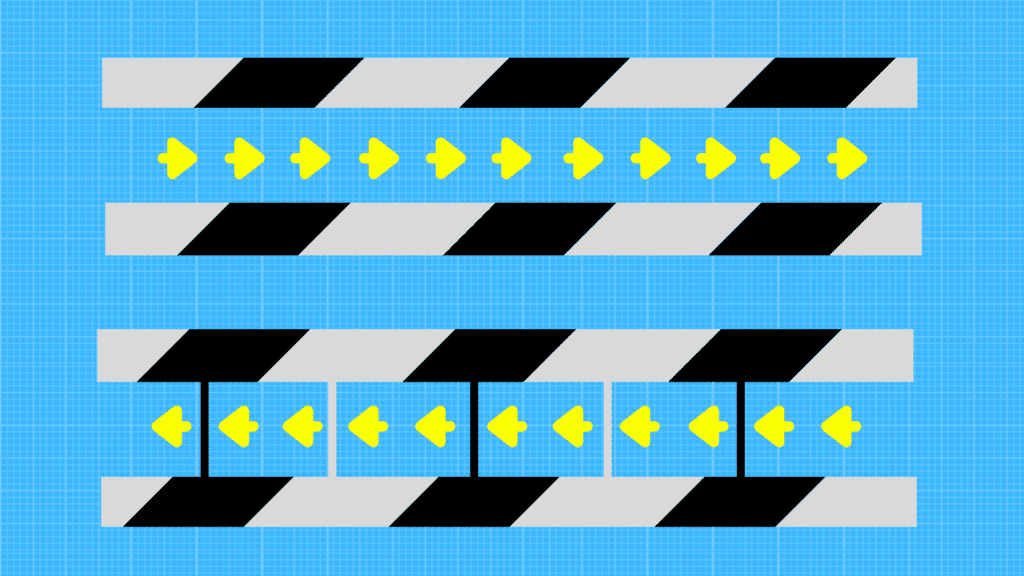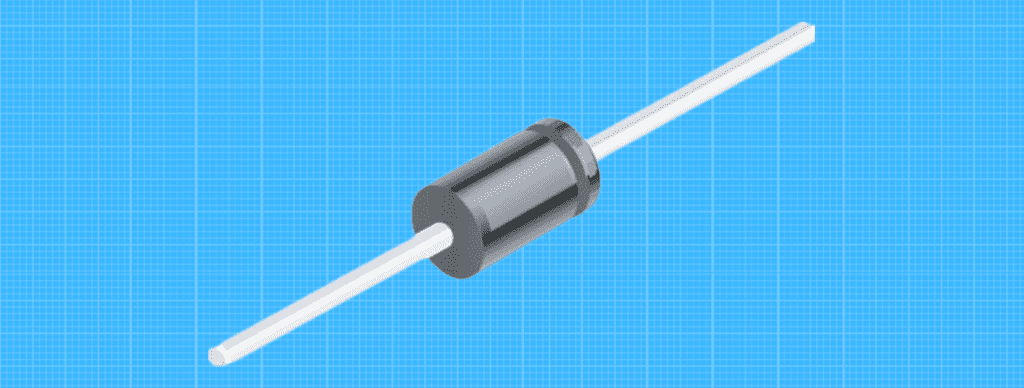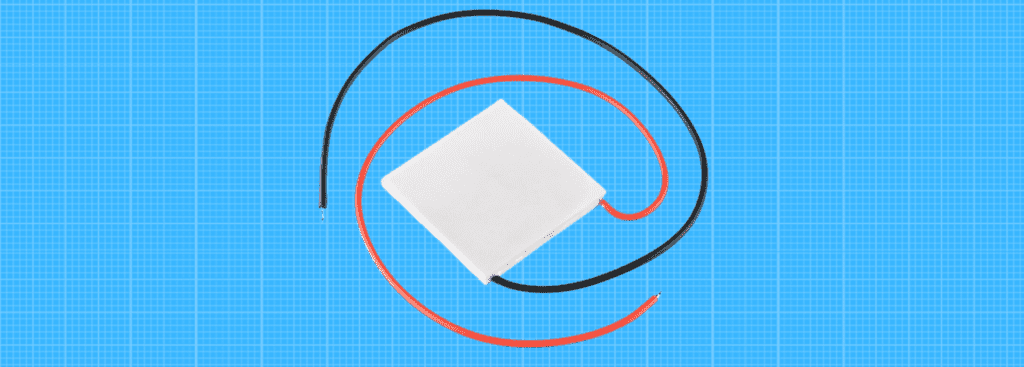What is a diode?
A diode is a two-terminal electronic component that restricts the flow of current in one direction and allows it to flow freely in the opposite direction. It has many applications in electronic circuits, and can be used to create rectifiers, inverters, and oscillators.
In this article, we’ll take a closer look at what is a diode and how it works. We’ll also explore some of its common uses in electronic circuits. So let’s get started!

How does a Diode work?
A Diode is an electronic device that only allows current to flow in one direction. They are usually found in electrical circuits. They work due the semiconductor material that they are created from, which can be either N-type or P-type. If the Diode is N-type it will only allow current to flow when voltage is applied in the same direction of the diode’s arrow, while P-type Diodes will only allow current to run when voltage is applied in an opposite course of its arrow.
The semiconductor material allows the current to flow by the creation of a ‘depletion zone‘ which is an area where no electrons are allowed. Once voltage is applied, the depletion zone reaches both ends of the diode and allows current to pass through it. This process is called ‘forward biasing‘.
If voltage is applied in the opposite way of the semiconductor material, a reverse bias. This will cause the depletion zone to only extend from one end of the terminal and stop the current from flowing. This is because if voltage was applied in the same route as the arrow on a P-type semiconductor, the P-type semiconductor would act like an N-type because it would allow electrons to run in the opposite direction of its arrow.

What are diodes used for?
Diodes are used to convert direct current into alternating current, while blocking reverse conduction of electric charges. This basic component can also be found in light dimmers, electric motors and solar cells.
Diodes are used in computers to protect the computer’s electronic components against damage due to power surges. They reduce or block voltage that is higher than required by the machine. This also reduces drain on the computer’s power supply, saving energy and lowering heat production within the unit. Diodes are found in high-end appliances such as ovens, dishwashers, microwave ovens and washing machines. They are used in these appliances to protect against damage due to power surges caused by electric utility faults.
Applications of Diodes
- Rectification
- As a Switch
- Source Isolation Circuit
- As Voltage Reference
- Frequency Mixer
- Protection against Reverse Current
- Protection against Reverse Polarity
- Protection against Surges
- AM Envelope Detector or Demodulator (Diode Detector)
- As a Light Source
- In a Positive Temperature Sensor Circuit
- In a Light Sensor Circuit
- A Solar Cell or Photo-Voltaic Cell
- As a Clipper
- As a Clamper
History of Diode
The word “diode” is derived from the Greek word, “di-odous” or “diodos”. A diode’s purpose is to allow electricity to go in one direction only. A diode can also be referred to as an electronic valve.
It was discovered by Henry Joseph Round through his experiments on electricity during 1884. These experiments were done with the use of an evacuated glass tube that had electrodes made of metal on both ends inside it. The cathode has a plate that has a positive charge and the anode has a plate that has a negative charge. When current was sent through the tube, it would light up which indicated that energy was flowing through the circuit.
Who invented diode
Although the first semiconductor diode was invented in 1906 by John A. Fleming, it is credited to William Henry Preece and Arthur Schuster for independently inventing the device in 1907.

Diode Types
- Small Signal Diode
- Large Signal Diode
- Zener Diode
- Light Emitting Diode (LED)
- Constant Current Diodes
- Schottky Diode
- Shockley Diode
- Step Recovery Diodes
- Tunnel Diode
- Varactor Diode
- Laser Diode
- Transient Voltage Suppression Diode
- Gold Doped Diodes
- Super Barrier Diodes
- Peltier Diode
- Crystal Diode
- Avalanche Diode
- Silicon Controlled Rectifier
- Vacuum Diodes
- PIN Diode
- Point Contact
- Gunn Diode
Small Signal Diode
A small signal diode is a semiconductor device that has fast switching capability and low voltage drop when in conduction. It provides a high degree of protection from damage due to electrostatic discharge.

Large Signal Diode
A Large Signal Diode is a type of diode that transmits signals of a higher power level than a small signal diode. A large signal diode is commonly used to convert alternating current to direct current. A large signal diode will transmit the signal without any energy loss and is less expensive than an electrolytic capacitor.
A decoupling capacitor is often used in conjunction with a large signal diode. The use of this device affects the transient response time of the circuit. The decoupling capacitor helps limit voltage fluctuations that are due to changes in impedance.
Zener Diode
A Zener diode is special type that will conduct electricity only in the region just under the forward voltage drop. This means that when there is voltage placed on one terminal of the Zener, it will allow current to move from the other terminal to the one with the voltage. It is important for this device to be properly used and grounded or else it may cause permanent damage to your circuit. It is also important for this device to be operated in the open air since it will fail when placed in a humid atmosphere.
When there is enough current applied to the Zener diode, then a voltage drop will be created. If this voltage reaches or exceeds the breakdown voltage of the machine, then it will allow current to flow from one terminal.

Light Emitting Diode (LED)
A light-emitting diode (LED) is made of semiconductor material that emits light when an electric current of sufficient magnitude passes through it. One of the most important properties of LEDs is that they are very efficient in converting electrical energy into optical energy. LEDs are also used as indicator lamps for indicating purposes on electronic devices such as computers, clocks, radios, televisions and so on.
The LED is a shining example of the advancement of microchip technology, and it has allowed for significant changes in lighting applications. LEDs use at least two semiconductor layers to produce light, one pn-junction to generate carriers (electrons and holes) that are then swept into opposite sides of a “barrier” layer that traps the holes on one side, and the electrons on the other. The energy of trapped carriers recombines in a “resonance” known as electroluminescence.
LED is considered to be an efficient type of illumination because it emits low levels of heat along with its light. It has longer life compared to incandescent bulbs which can last up to 60 times longer and has a higher luminous efficiency and emits less toxic substances compared to traditional fluorescent lamps.
The greatest advantage of LEDs is the fact that they need very little power when in operation, depending on the type of LED. At present, it is possible to use LEDs with power sources ranging from solar cells to batteries, and even alternating current (AC).
There are many different types of LEDs, and they come in various colors including red, orange ,yellow, green, blue, white and others. Today, LEDs are available with luminous flux ranging from 10 to 100 lumens per watt (lm/W) which is almost the same as conventional light sources.

Constant Current Diodes
A Constant Current Diode, or CCD, is a type of voltage-regulator diode for power supplies. The main function of the CCD is to reduce the power loss in the output and improve the voltage regulation by reducing its variation with load changes. A CCD can also be used to adjust DC input power levels and to regulate DC levels in the output rails.

Schottky Diode
Schottky diodes are also called hot-carrier diodes.
The Schottky Diode was invented by Dr. Walter Schottky in the year 1926. The invention of the Schottky diode is what made it possible for us to use LEDs (light emitting diodes) as robust signal sources.
The diode has a very advantageous effect when it is used in high frequency circuits. The Schottky diode has mainly three components; the P, N and the metal-semiconductor junction. The construction of this device is such that an abrupt junction forms within the solid semiconductor. This makes it possible for carriers to run from the semiconductor to the metal. In return, it helps in lowering the forward voltage which in turn reduces power losses and increases switching speeds of devices that use Schottky diodes by a very large margin.

Shockley Diode
A Shockley diode is a semiconductor device with an asymmetrical arrangement of electrodes. The diode will conduct in one direction and significantly less so if the polarity is reversed. If an external voltage is maintained on a Shockley diode, then it will become progressively forward biased as the applied voltage increases up to a point called the “cut off” voltage at which there is no appreciable current as all electrons recombine with holes. Beyond the cut-off voltage there is a region of negative resistance on the graphical representation of the current/voltage characteristic curve. The Shockley will operate as an amplifier at negative resistor values over this range.
The operation of the Shockley can best be understood by decomposing it into three parts known as regions, the current in the reverse direction from bottom to top is 0, 1 and 2 respectively.
In region 1, when a positive voltage is applied for a forward bias then electrons diffuse into the n-type semiconductor from the p-type material where a ‘depletion zone’ is formed due to replacement of majority carriers. A depletion zone is an area in which the charge carriers are removed by applying voltage. The depletion zone around the p-n junction prevents current flowing across the front of the unidirectional device.
When electrons enter into the n-side from the p-type side, a ‘depletion zone’ is formed on going from bottom to top till the path of hole current is blocked. The holes which were travelling from top to bottom recombine with electrons on going from bottom to top. That is a ‘recombination zone’ appears between the depletion zones of conduction band and valence band, which prevents further flow of majority carriers through the Shockley diode.
The flow of current is now controlled by one carrier which is the minority carrier i.e. electrons in this case for n-type semiconductor and holes for p-type material. So we can say that, here current run is controlled by majority carriers (holes and electrons) and flow of current will be independent of applied voltage as long as there is enough number of free carriers for conduction.
In region 2, electrons emitted from depletion zone recombine with holes on the other side and create new majority carriers (electrons in p-type material for n-type semiconductor). As these holes are entering into the depletion zone they complete the current course path through the Shockley diode.
In region 3, when an external voltage is applied for a reverse bias then space charge region or depletion zone consisting of both majority and minority carriers appears in the junction. The electron-hole pairs are separated due to applying voltage across them which results in a drift current through Shockley. This leads to a run of small amounts of current through the Shockley diode.

Step Recovery Diodes
A step recovery diode (SRD) is a semiconductor device that can provide a fixed, unconditionally stable conducting state between its anode and cathode. The transition from the off-state to the on-state can be triggered by negative voltage pulses. In its on-state, an SRD behaves as a perfect diode. In the off-state, an SRD is predominantly non-conducting with some leakage current, but typically not enough to cause significant power loss in most applications.
The figure below shows step recovery waveforms for both types of SRDs. The top trace shows a fast-recovery type, which emits a large amount of light when the off-state is entered. In contrast, the bottom trace shows a super-fast recovery diode that has been optimized for high speed operation and exhibits only negligible visible emissions from the on-to-off transition.
In order to turn on an SRD, the anode voltage needs to exceed the machine threshold voltage (VT). The SRD will turn off when the anode potential is less than or equal to the cathode potential.

Tunnel Diode
A tunnel diode is a form of quantum engineering that takes two pieces of semiconductor and sandwiches one piece so that the other side is facing out. The tunnel diode is unique in the fact that the electrons flow through the semiconductor and not around it. This is one of the main reasons as to why this type of engineering is so unique, because no other form of electron transportation, up to this point, has been able to accomplish such a feat. One such reason as to why tunnels diodes are so popular for this reason is because they take up less space than other forms of quantum engineering and can also be used in many applications across many fields.

Varactor Diode
A varactor diode is a semiconductor used in voltage-controlled variable capacitance. The varactor diode has two connections, one on the anode side of the PN junction and one on the cathode side of the PN junction. When you apply a voltage across the varactor, it will allow an electric field to form that changes the width of its depletion layer. This will effectively alter its capacitance.

Laser Diode
A laser diode is a semiconductor that emits coherent light, which is also called laser light. The laser diode emits directional parallel light rays with low divergence. This is in contrast with other light sources like ordinary LEDs where the emitted light diverges significantly.
Laser diodes are used for optical storage, laser printers, barcode scanners and fibre-optic communication.

Transient Voltage Suppression Diode
A Transient Voltage Suppression Diode (TVS) is a diode that has been designed to protect against electrical power surges and other types of transients. It is also capable of separating the voltage and current to help prevent high-voltage transients from entering microcircuit electronics. The TVS diode will not conduct during normal operation, but will only conduct during an electrical transient. During an electrical transient, the TVS diode can handle fast dv/dt as well as large dv/dt spikes. The device is typically found in the input circuitry of microprocessor circuits where it handles high-speed switching signals.

Gold Doped Diodes
Gold Doped Diodes are found in capacitors, rectifiers, and other gadgets. These diodes are mostly found in the electronics industry because they do not require much voltage to conduct electricity. Gold Doped Diodes can be made with either p-type or n-type semiconductive materials. A Gold Doped Diode conducts electricity more efficiently at high temperatures, especially in n-type diodes.
Gold is not an ideal material to use for doping semiconductors because gold atoms are too big to fit inside semiconductor crystals easily. This means that gold won’t normally diffuse into a semiconductor very well. One of the ways to increase the size of gold atoms so they will diffuse is to add Silver or Indium. The most common method used to dope semiconductors with gold is by using Sodium Borohydride, which helps create an alloy of gold and silver inside the semiconductor crystal.
Gold Doped Diodes are generally used in high-frequency power applications. These diodes help to reduce voltage and current by recovering energy from the back emf of the diode’s internal resistance. Gold Doped Diodes are useful in machines such as resistor networks, lasers, and tunnel diodes.

Super Barrier Diodes
Super Barrier Diodes are a type of diode that can be used in high voltage applications. These diodes have a low forward voltage at a high frequency.
The Super Barrier Diodes are a very versatile type of diode because they can handle a wide range of frequencies and voltages. They are primarily used in power switching circuitry for power distribution systems, rectifiers, motor-drive inverters, and power supplies.
The Super Barrier Diode is primarily made of silicon dioxide with some copper. The Super Barrier Diode has several design variations that include the germanium-based planar super barrier diode, the junction super barrier diode, and the isolator super barrier diode.

Peltier Diode
A peltier diode is a semiconductor. It can be used to generate an electric current in response to thermal energy input. This device is still new and has not been fully researched on, but it appears that it could be useful for the conversion of heat to electricity. This could be used for water-heating elements, or even in cars. This would make it possible to use the heat generated by an internal combustion engine, which is usually wasted energy. It would also allow the engine to run more efficiently, since it wouldn’t have to produce as much power (thus using less fuel), and instead the peltier diode would convert waste heat into power.

Crystal Diode
Crystal diodes are typically used for narrow-band filtering, oscillators or voltage-controlled amplifier applications. The crystal diode is considered to be a special application of the piezoelectric effect. This process assists in the generation of voltage and current signals by tapping into their inherent properties. Crystal diodes are also commonly combined with other circuits that provide amplification or other specialized functions.

Avalanche Diode
The Avalanche Diode is a semiconductor that generates an avalanche from a single electron from the conduction band into the valence band. It is used as a rectifier in high-voltage direct-current power circuits, as a detector for infrared radiation and as a photoelectric machine for ultraviolet radiation. The avalanche effect enhances the forward voltage drop across the diode so that it can be made much less than its breakdown voltage.

Silicon Controlled Rectifier
A Silicon Controlled Rectifier (SCR) is a thyristor that has three leads. It was designed to act like a switch in microwave ovens for power control. It can be triggered by current or voltage or both, depending on the setting of the gate lead. When the gate lead is negative, it allows current to flow through the SCR and when it is positive, it blocks current from passing through the SCR. The location of the gate lead determines whether current passes or blocks when it is in place.

Vacuum Diodes
Vacuum diodes are another type of diode, but unlike the other types, they are used in vacuum tubes to regulate power course. Vacuum diodes allow current to run at a constant voltage, but also have a control grid that changes this voltage. Depending on the voltage that is in the control grid, a vacuum diode will either allow or stop current from flowing. Vacuum diodes are used as amplifiers and oscillators in radio receivers and transmitters. They also serve as rectifiers, which changes alternating current into direct current for use by electric devices.

PIN Diode
PIN diodes are a type of pn-junction diode. In general, the PINs is a semiconductor that exhibits a low resistance when voltage is applied to it. This low resistance will increase with an increase in the applied voltage. PINs have a threshold voltage before they become conductive. So if no negative voltage is applied, the diode won’t allow any current to run until it reaches this value. The amount of current that flows through the metal will be dependent on the potential difference, or voltage, between both terminals and there will be no leakage from one terminal to another terminal.

Point Contact Diode
The Point-Contact Diode is a one-sided device that has the ability of improving the signal of radio frequencies. The Point-Contactis also referred to as an unjunction transistor. It consists of two wires which are attached to the semiconductor material. When these wires touch, it creates a “pinch point” where electrons can cross over. This type of diode is used in particular with AM radios and other gadgets so they can detect radio frequency signals.

Gunn Diode
A Gunn is a type of diode that is made of two back-to-back pn junctions with asymmetric barrier heights. This causes electron flow to be highly suppressed in the forward direction, while current still runs the reverse direction.
These devices are usually used as microwave oscillators. They were invented around 1959 by J.B. Gunn and A.C. Newell at the Royal Signals Establishment in Britain, whence comes the name: “Gunn” is the acronym for their surnames and “diode” because they worked on gaseous devices (Newell was formerly of the Edison Bell Laboratories, where he had worked on semiconductor devices).
The first large-scale application of Gunn diodes was the first generation of British military UHF radio equipment that came into use in about 1965. Military AM radios also made extensive use of Gunn diodes.
The characteristic of a Gunn diode is that the current is only 10% to 20% of what it would be in a normal silicon diode. In addition, the voltage drop across the diode is about one tenth as much as in a conventional kind, typically 25 mV at room temperature for a 0.

Video Tutorial
Conclusion
We hope you learned what is a diode. If you’re interested in learning more about how this fascinating component works, take a look at our articles on diodes page. We believe you will apply everything you have learned this time as well.
